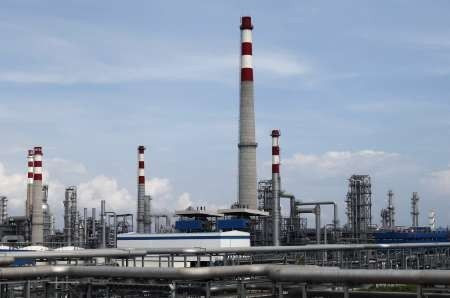China Importing Record Breaking Amounts Of Crude Oil With No End In Sight

KEY POINTS
- China set an all-time record in oil imports in November
- Saudi Arabia is China's top oil supplier
- In 2018, China imported almost 70% of its oil needs
China has imported a record amount of oil from Saudi Arabia this year as U.S. sanctions have made it more difficult for Beijing to purchase crude from Iran and Venezuela.
In November, China imported 8.21 million tons of crude oil from the Saudis, pushing the total volume of imports for the first 11 months of 2019 to a record of 76.33 million tons, a 53% surge from the prior year.
Saudi Arabia is now China’s top oil supplier, followed by Russia (70.3 million tons of oil through November, up 9% from prior year) and Iraq (47.08 million tons, up 13.7%).
On the whole, China imported a record high of 45.74 million tons of oil in November.
November marked the second consecutive month China purchased no oil from Venezuela while imports from Iran amounted to 14.36 million tons for the year through November, a 47% plunge from the same period in the prior year.
China is certain to keep purchasing even more Saudi oil as the two nations have established various joint ventures in petroleum refining, storage and sales. Two jointly owned refineries in China, Hengli Petrochemical and Zhejiang Petrochemical, were granted total import quotas of 24.3 million tons of oil in 2019, and that figure is expected to increase in 2020.
China also imported 37 million tons of oil from Brazil through November, a 16.6% jump year-on-year.
Due to the trade war and a 5% tariff on U.S. oil, China only purchased 6.35 million tons of crude oil from U.S. through the first 11 months of the year, a 48% slump from the same period in 2018.
However, as trade tensions with the U.S. ease, China's unquenchable thirst for crude oil will only continue to surge as it attempts to revitalize a slowing economy.
Put another way, China imported 11.18 million barrels per day in November, the highest monthly figure for any country since the U.S. imported 10.77 million barrels per day in June 2005.
But China’s leaders are wary of depending too much on foreign oil imports – as such they have pressured state-owned energy firms like PetroChina Co. (PTR) to increase domestic oil and gas output.
In 2018, China imported 69.8% of its oil needs.
Earlier this year, China's three biggest state-owned domestic oil companies -- PetroChina, Sinopec Corp. and CNOOC Ltd. (CEO) – said they would spend about 517 billion yuan ($74 billion), up 18% from last year, to produce more oil and gas.
However, unlike most foreign oil firms, Chinese producers are relying on older oil properties which are now more costly to operate.
“Investors have sufficient reasons to question whether the increased spending may generate reasonable returns,” said Laban Yu, an analyst for Jefferies Financial Group in Hong Kong. “The [Chinese] oil companies may just be implementing the government’s order, even if that means they produce oil at a high cost.”
Neil Beveridge, an analyst at Sanford C. Bernstein & Co. in Hong Kong, commented: “There is no question that those [three] companies are under a lot of pressure to quickly grow production. There will be a concern that in our flat commodity price environment, this could erode returns, and shareholders will want to see discipline.”
© Copyright IBTimes 2025. All rights reserved.





















